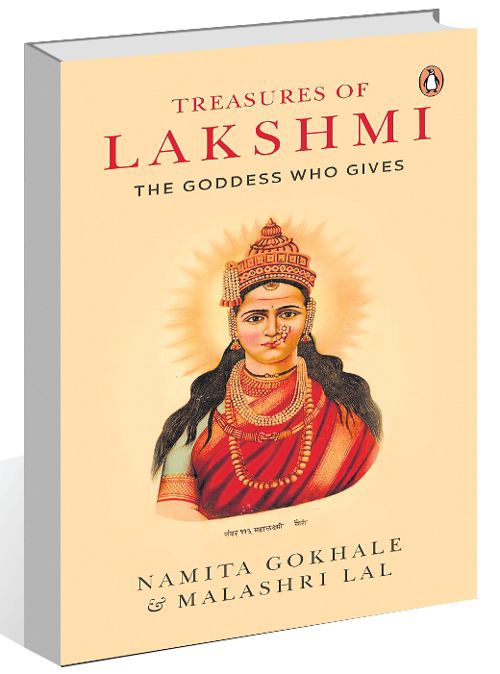Treasures of Lakshmi Edited by Namita Gokhale & Malashri Lal. Penguin Random House. Pages 320. Rs 499
Book Title: Treasures of Lakshmi
Author: Namita Gokhale & Malashri Lal
Aradhika Sharma
This intriguing anthology edited by Namita Gokhale and Malashri Lal explores the essence of the great sacred feminine in the form of Shri or Lakshmi. The book is the third part of the trilogy that began with ‘In Search of Sita’, followed by ‘Finding Radha’, and culminates in this book. Indeed, both Sita and Radha are the incarnations of Lakshmi.
Lakshmi, the goddess of abundance, wealth, well-being, fertility, victory and prosperity, has retained her significance in Indian worship, culture, folklore and myth. The powerful deity Shri has been mentioned in the ‘Rig Veda’ and the ‘Shatapatha Brahmana’. As the subcontinent underwent cultural changes, Shri transcended the dimensions of time and was also adopted as the goddess of wealth and fortune in new religions such as Buddhism and Jainism, which are outside the realm of Hinduism.
‘Vishnu Purana’ describes her origins in the churning of the ocean in the cosmic war between devas and asuras, where after eras of cosmic struggle, she emerges seated on a thousand-petalled lotus, holding the Akshay Patra in her arms. Accompanying her is Kamadhenu, the cow of plenty; Kalpavriksha, the wish-fulfilling divine tree, and Chintamani, the wish-fulfilling jewel.
Gokhale and Lal curate a collection of articles and translations of original works by an impressive panel of authors, including renowned scholars of religion, Indologists, mythologists, Buddhist scholars, authors and translators. Notable contributors include Constantina Rhodes, Sukumari Bhattacharji, Devdutt Pattanaik, Robert Chalmers (1st Baron Chalmers), Koral Dasgupta, GV Tagare, Bibek Debroy, Sanjukta Dasgupta and Arunava Sinha.
The book is organised into four sections that explore a unique aspect of Lakshmi’s enigmatic nature. These sections contain articles and stories that reveal hidden tales and feminine energies which transcend time and space. The first section focuses on the goddess’ divine interpretations, the second on her creative interpretations, the third on her cultural interpretations, and the fourth on her folk interpretations. Additionally, the book offers charming and unexpected myths and tales. It reveals that the tulsi plant is considered the sylvan form of Lakshmi and rose from being considered a mere plant to one representing sacrality between 200 BCE and 300 CE.
The authors explain how the lotus on which she stands is a symbol of the lovely, sweetly smiling goddess Lakshmi. However, her tantric personality can also don the accoutrements of the fierce goddesses and expresses herself as Kundalini Shakti. Furthermore, the readers are introduced to the dichotomy of Lakshmi and Alakshmi. The latter is Shri’s elder sister. She embodies misfortune, poverty, laziness and greed, and is the antithesis of the goddess of prosperity. Fables from ‘Jataka Tales’ that feature Shri also find a place in the anthology.
This timeless treasure of stories, legends and hymns associated with Lakshmi sheds light on her chanchal (fickle) yet benevolent character. The book also enumerates the 108 names of Lakshmi and the thousand appellations of her sahasranama; the specific rituals or practices that are followed in different regions to be blessed by her abundance.
The editors have also explored the “brand rhetoric” of Goddess Lakshmi in the present day. The reader is informed that the first indigenous cosmetic brand in Independent India, Lakme, was inspired by Lakshmi. State and Central governments have named their welfare schemes after her, such as Ladli Lakshmi Yojana, Dhanalakshmi and Bhagyalakshmi schemes, etc.
In the compilation, Gokhale and Lal explore the deeper facets of Hindu esoteric philosophy and spirituality and shed light on the innumerable interesting and chimeric aspects of the beautiful, bountiful and forever pertinent Maha Laxmi Gouree.














